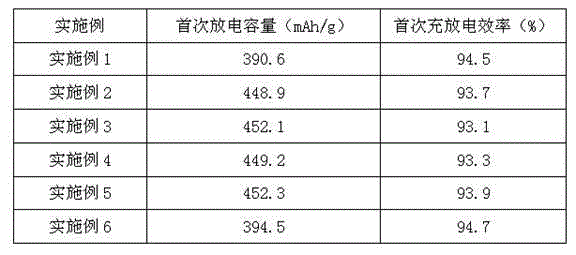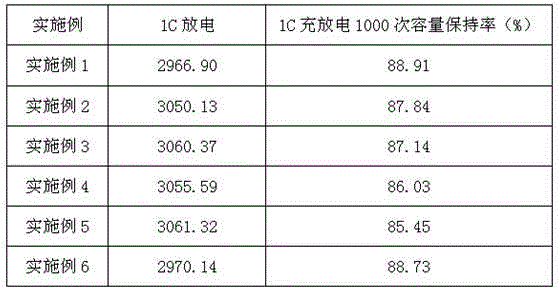Preparation method of carbon/graphite/tin composite anode material
A technology of composite materials and negative electrode materials, which is applied in the field of preparation of carbon/graphite/tin composite negative electrode materials, can solve the problems of high resistance, poor cycle performance, and reduced battery capacity of tin-carbon composite materials, and achieve excellent product performance. The effect of high capacity and simple production process
- Summary
- Abstract
- Description
- Claims
- Application Information
AI Technical Summary
Problems solved by technology
Method used
Image
Examples
Embodiment 1
[0029] The ingredients are: ≤1mm microcrystalline graphite 5%, ≤100nm nano tin 5%, ≤0.075mm calcined petroleum coke 26%, 1~4mm calcined petroleum coke 15%, 4~l0mm electric calcined anthracite 10%, 10-16mm electric calcined Anthracite 5%, 10-16mm calcined pitch coke 14%, acetylene carbon black 2%, coal tar pitch 18%. Add T300PAN chopped carbon fiber (diameter 12μm, length 10mm) with 1% of the above raw material weight, the preparation steps are as follows:
[0030] (1) Ingredients and kneading, first add carbon black, natural graphite, nano-tin, calcined petroleum coke powder, calcined petroleum coke, electric calcined anthracite and calcined pitch coke into the kneader, the dry mixing time is 35 minutes, and the dry mixing temperature is 120°C; when the dry mixing temperature reaches the set time and temperature, add coal tar pitch at 175°C for wet mixing, the wet mixing time is 30 minutes, and the kneading temperature is 160°C to form a composite plastic body;
[0031] (2) R...
Embodiment 2
[0035] The ingredients are: ≤1mm microcrystalline graphite 5%, ≤100nm nano tin 10%, ≤0.075mm calcined petroleum coke 25%, 1~4mm calcined petroleum coke 13%, 4~l0mm electric calcined anthracite 8%, 10-16mm electric calcined Anthracite 5%, 10-16mm calcined pitch coke 14%, acetylene carbon black 2%, coal tar pitch 18%. Add 1% T300PAN chopped carbon fiber (diameter 12μm, length 10mm), the preparation steps are as follows:
[0036] (1) Ingredients and kneading, first add carbon black, natural graphite, nano-tin, calcined petroleum coke powder, calcined petroleum coke, electric calcined anthracite and calcined pitch coke into the kneader, and then add chopped carbon fiber after an interval of 5-6 minutes Carry out dry mixing, the dry mixing time is 35 minutes, and the dry mixing temperature is 120°C; when the dry mixing temperature reaches the set time and temperature, add coal tar pitch at 175°C for wet mixing, the wet mixing time is 30 minutes, and the kneading temperature At 160...
Embodiment 3
[0041] Using the same ingredients as in Example 2, plus 2% T300PAN chopped carbon fiber (diameter 12 μm, length 10 mm), the process is as in Example 1.
PUM
| Property | Measurement | Unit |
|---|---|---|
| particle diameter | aaaaa | aaaaa |
| length | aaaaa | aaaaa |
| diameter | aaaaa | aaaaa |
Abstract
Description
Claims
Application Information
 Login to View More
Login to View More - R&D
- Intellectual Property
- Life Sciences
- Materials
- Tech Scout
- Unparalleled Data Quality
- Higher Quality Content
- 60% Fewer Hallucinations
Browse by: Latest US Patents, China's latest patents, Technical Efficacy Thesaurus, Application Domain, Technology Topic, Popular Technical Reports.
© 2025 PatSnap. All rights reserved.Legal|Privacy policy|Modern Slavery Act Transparency Statement|Sitemap|About US| Contact US: help@patsnap.com


